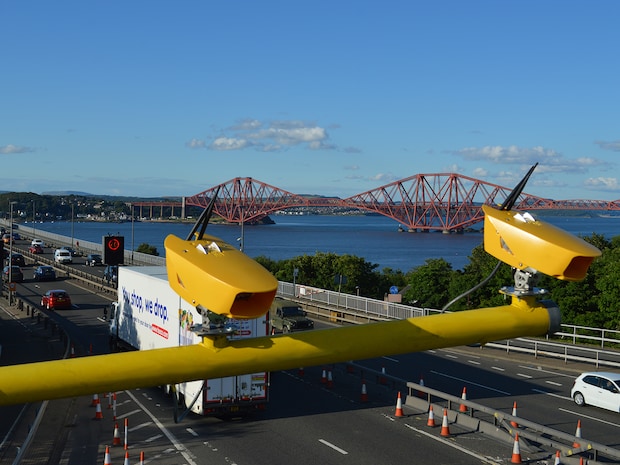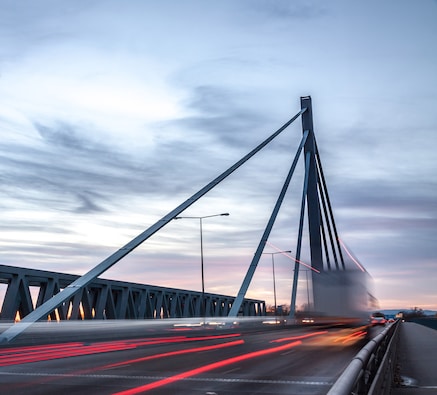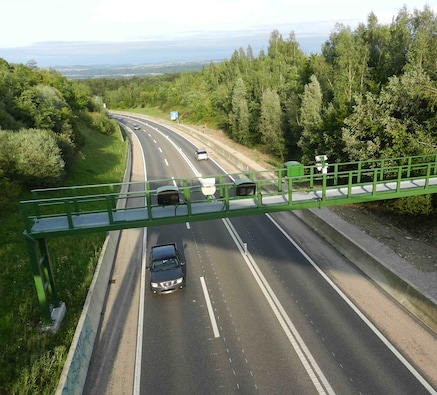Cameras that concentrate on the bigger picture
Have you ever considered that speed cameras can have a purpose beyond merely capturing speed violations? Here's a thought: Speed cameras are helping people get work, keep people safe and indeed save the world. Whether drivers appreciate speed cameras or not, most would acknowledge that their purpose is to reduce accidents and fatalities. So the safety aspect is nothing new. But the ones on mobility and the environment may be eye-openers.

At Jenoptik, we develop and create traffic monitoing technologies with this bigger picture in mind. We’re motivated by all the possibilities photonics has, to make the world a better place. Enforcement plays a key part of course, especially with speed monitoring, intersections and red light violations, but we believe that our customers within transport ministries, road authorities and police forces share the same ultimate vision.
Less emissions, less congestion, less accidents, and less fatalities are all, without doubt, elements of a better world.
Because different countries have different laws with regards to transport and the collection of personal data, we produce different traffic control systems, for example section control (average speed control) and spot speed monitoring. Average speed control is measured by ANPR/ALPR cameras (automatic number/license plate recognition) and is very widely deployed in the UK. Europe’s longest controlled stretch is on the A9 in Scotland – the road that heads north from Edinburgh to the Scottish Highlands. More than 350 kilometers (220 miles) of Scottish roads have been equipped with Jenoptik’s SPECS speed camera systems. A vehicle’s number plate is recorded as it drives into a controlled section and then again as the vehicle leaves. The vehicle’s average speed between the two ANPR cameras is then analysed and calculated as to whether it is over the limit or not.
Spot speed monitoring is based on radar, laser and induction loop technology and only takes a photograph if a vehicle is going too fast. This is the system currently used in Germany so as to conform with local data protection legislation.
There are a number of benefits of average speed control over spot speed control. Because speed is monitored over a longer stretch of road, more drivers tend to stick to the limit. Drivers also, on the whole, accept average speed control better than spot speed control as they the violation occurs over a longer stretch of road, not just in one single moment. It’s seen as a fairer, more transparent system of enforcement, especially with cameras in the UK being painted a bright yellow so they are highly visible.
Over and above this, average speed control also helps to harmonise traffic. The benefits here are many. As people drive more evenly, with fewer switches between breaking and acceleration, less fuel is consumed and there are less emissions and cleaner air, which – it goes without saying – is good for the environment and good for people. Even, smooth flowing traffic also means less congestion, which means less aggravation, less anxiety and far less road rage! Having a hassle-free, regulated commute and getting to the office or factory on time puts people in a far better frame of mind to start their day.
These are great environmental and social benefits to add to the primary concerns of road safety. Different authorities and municipalities of course have different priorities. A recent average speed control installation in Wales, for example, was not first and foremost for the purpose of road safety (although naturally that was an important component) it was to support local environmental targets for achieving less emissions. Toxic emissions have been reduced by up to 47 per cent on particularly polluted sections of the Welsh freeway system. This is actively providing a contribution to better air, environmental protection and the health of every individual!
So that's the bigger picture – safer families, happier commuters, more compliant drivers and cleaner, fresher air for everyone to breathe. All made more achievable with the help of smart cameras and systems manufactured by Jenoptik.









